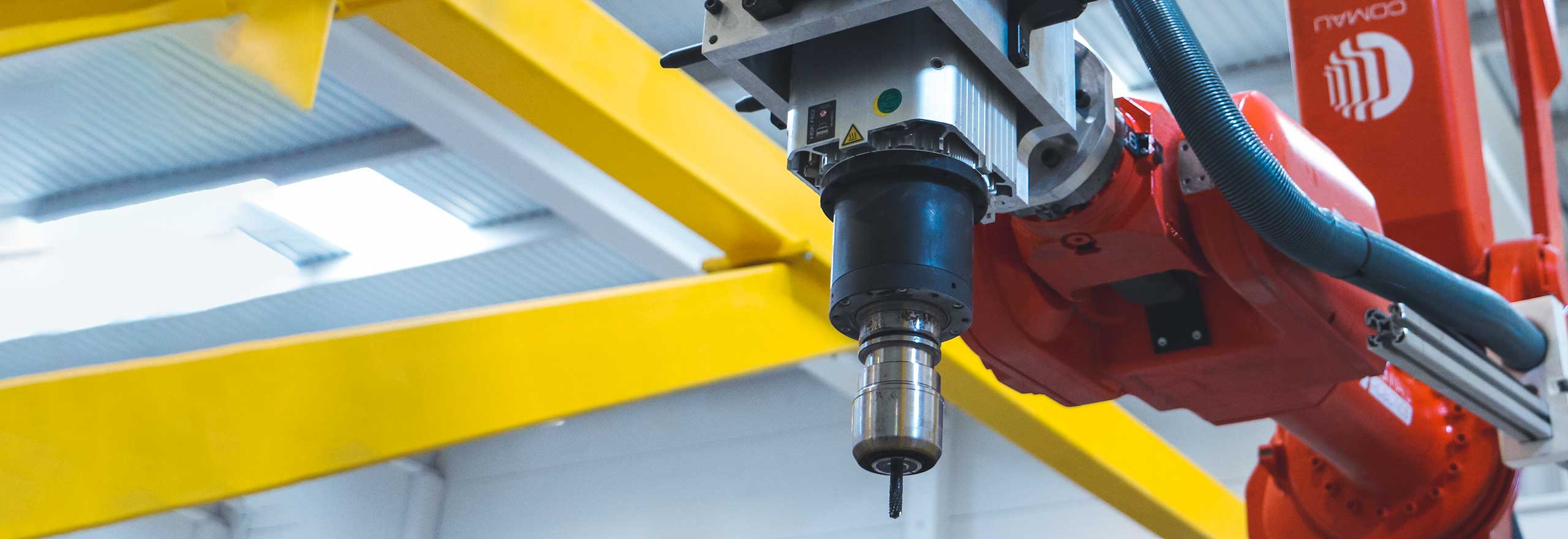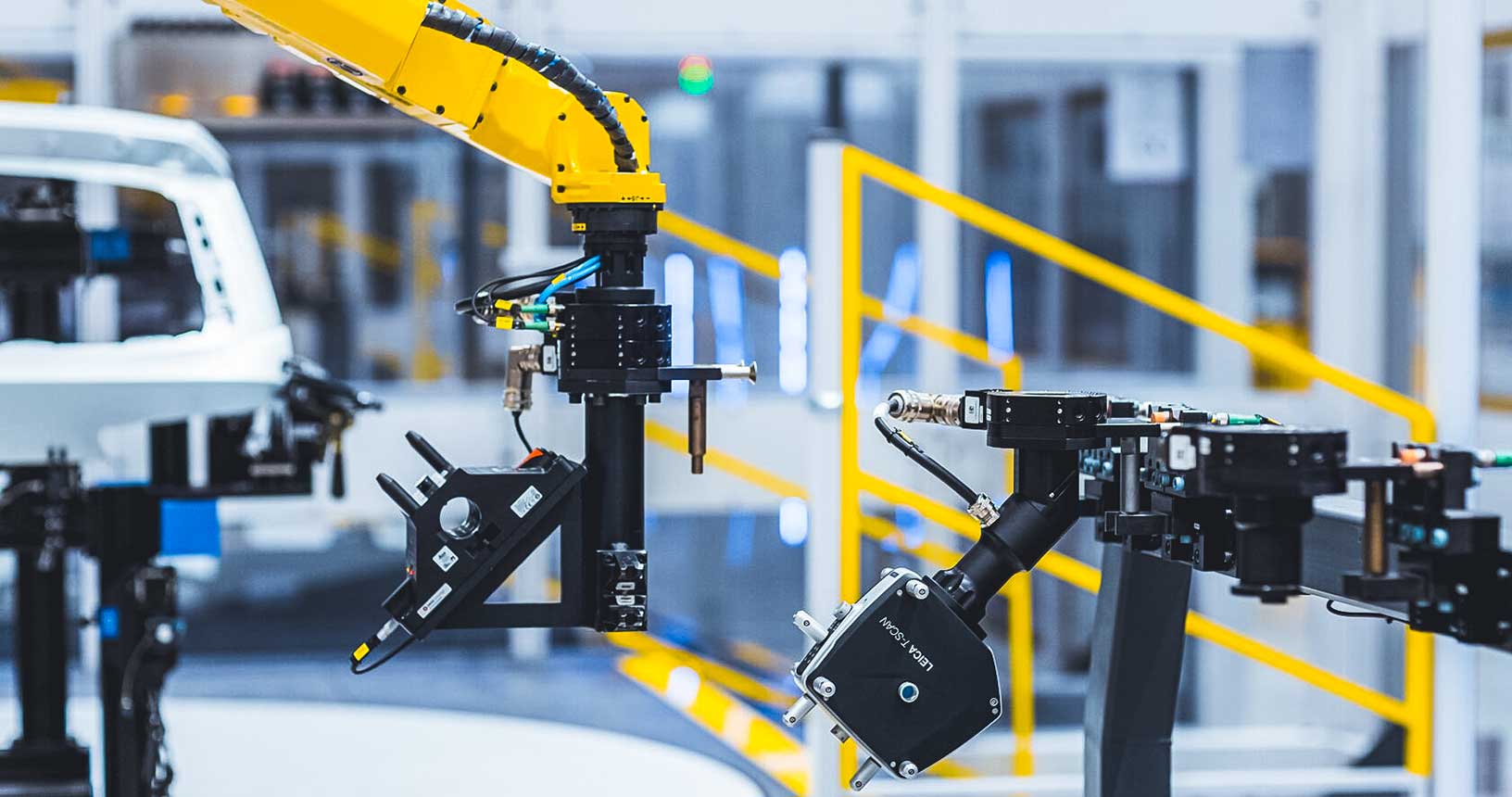Metrology-assisted Manufacturing
Bring metrology-grade accuracy to industrial automation for more efficient manufacturing processes.

Putting accuracy at the heart of production
See how laser tracker automation gives robots repeatability with accuracy to drive manufacturing productivity.
The ability to intelligently automate production operations is a key promise of smart manufacturing. Hexagon’s metrology-assisted manufacturing solutions use measured data to provide real-time feedback for applications, including robot guidance and machine tool correction.
Smarter industrial equipment
-
Overview
-
Robot guidance
-
Data-driven manufacturing
Manufacturing is moving towards smarter, more autonomous operations from design through production and into service life. Emerging technologies such as AI and machine learning are enhancing the application potential of established technologies, and industrial automation systems are no exception.
Metrology data is a powerful and largely untapped resource for employing greater automation in smart manufacturing environments. From improving the accuracy of industrial robots to correcting machine tool paths to account for tool wear, metrology-assisted manufacturing has a huge range of productivity-enhancing applications on the modern shop floor.

Accurate robot positioning for manufacturing
Industrial robots have been a staple of manufacturing for decades, completing a vast variety of common factory activities from part delivery, palletisation and picking to welding, painting and labelling. Robots are also frequently deployed in assembly operations, where they offer better throughput and productivity.
然而,机器人的应用潜力anufacturing can be limited by their accuracy. While robots are highly repeatable, their positioning accuracy is sometimes not high enough for more intricate manufacturing operations.
Hexagon’s metrology-grade laser trackers with machine control sensors have the ability to guide industrial robots to a precise position, enabling robots to complete high-precision tasks that open up new fields of application potential. This metrology-assisted manufacturing approach is increasingly common in the automotive and aerospace industries, and robot guidance is beginning to gain traction in other fields as well.

Explore
$ProductName
$SustainabilityImpactLabel
$SustainabilityCTABandHeadingLabel
We’re climbing the automation curve
Our transition to Intelligent automation is accelerating. Ultimately, our innovations will give rise to new technologies and applications - many of which we’ve yet to imagine. Today, every Hexagon solution is mapped and tagged according to its level of automation, so customers can clearly track our progress towards the freedom of autonomy.
Level 0/None:
Human performs all tasks, no data being used
Level 1/Human-assisted:
Human is in charge of performing tasks but certain functions are automated to simplify control
Level 2/Partial:
Some tasks are automated so that operation can be autonomous for short periods (or within specific circumstances)
Level 3/Conditional:
Autonomous operation is possible within certain bounds, but human intervention may be necessary at short notice
Level 4/High:
Designed to complete required tasks autonomously, but may require human intervention if circumstances change beyond specific bounds
Level 5/Full:
Control tasks automated under all conditions, but human may request to take over; can complete all expected tasks without human intervention
Our sustainability influence
Our solutions create meaningful improvements in quality, efficiency, productivity, and safety – the antidotes to the status quo of waste, pollution, diminishing margins, and increased risk. Explore the highlighted products helping industry address environmental challenges in land, air and water.
Land
Products that make an environmental impact in forest monitoring, material reusability, farming or water usage.
Air
Products that make an environmental impact in renewable energy, noise pollution elimination and e-mobility.
水
Products that make an environmental impact in saving our oceans, reducing pollution and increasing access to clean water.




